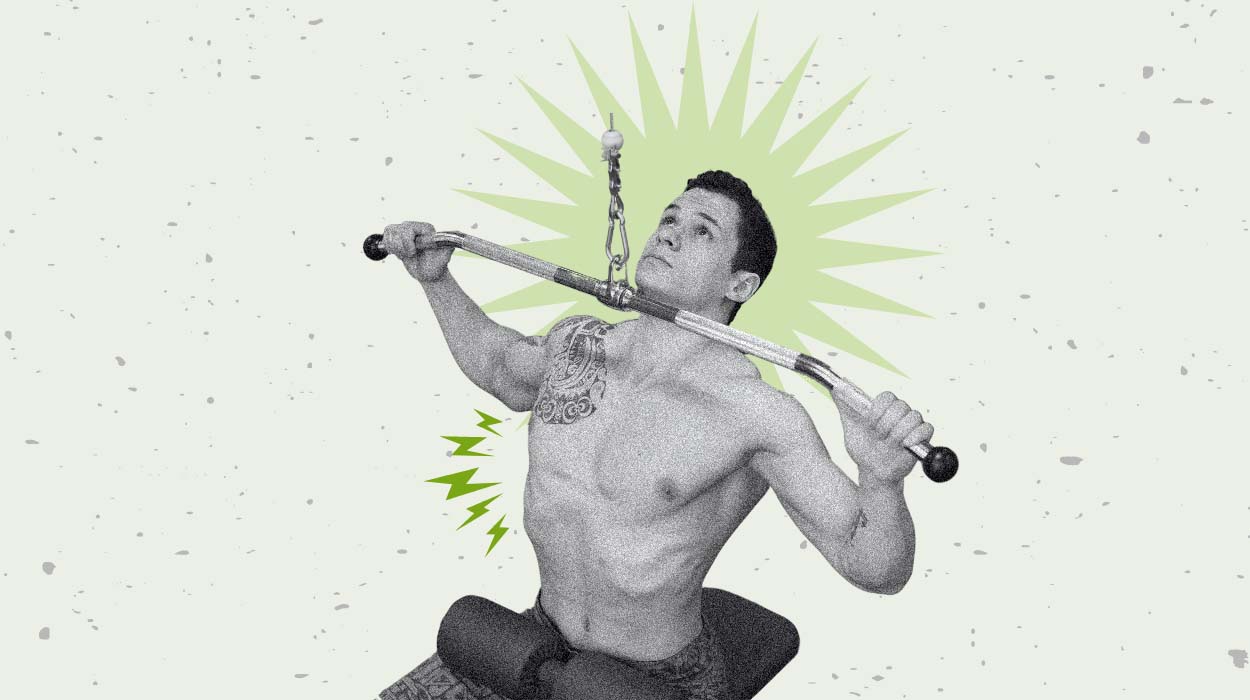
Regular engagement in the best upper back exercises can unlock a plethora of health benefits. These workouts, when incorporated into your daily routine, fortify the upper back and contribute to overall wellness.
A balanced breakfast combined with upper back exercises can expedite weight loss and enhance muscle definition. Furthermore, a robust upper back is a vital element for overall core strength, essential for achieving a coveted flat stomach and weight reduction.
This article delves into the significance and benefits of upper back exercises, the role of a balanced diet, and how together, they can aid in achieving your health and fitness goals.
Upper Back Workout
Upper back exercises, combined with a balanced diet, can enhance overall health, improve posture, and boost muscle strength. Regular training can also alleviate chronic pain, improve functional capacity, and aid in better breathing.
List exercises include:
However, correct form, controlled movement, and proper recovery are essential to maximize results and prevent injuries.
Upper Back Exercises
Building on the importance and benefits of upper back exercises, let’s delve into the six best exercises you can incorporate into your workout routine, starting with renegade rows.
Renegade Rows
Renegade rows are a compound exercise that simultaneously works for various muscle groups. Holding a plank position with a dumbbell in each hand, you target the upper back muscles – including the latissimus dorsi and the rhomboids – and engage your core, deltoids, biceps, and triceps.
While maintaining a stable plank, lift one dumbbell off the floor and pull it upward until your elbow is level with your torso. Lower it carefully, then repeat on the other side. This exercise improves upper body strength, posture, and core stability, enhancing body coordination and balance.
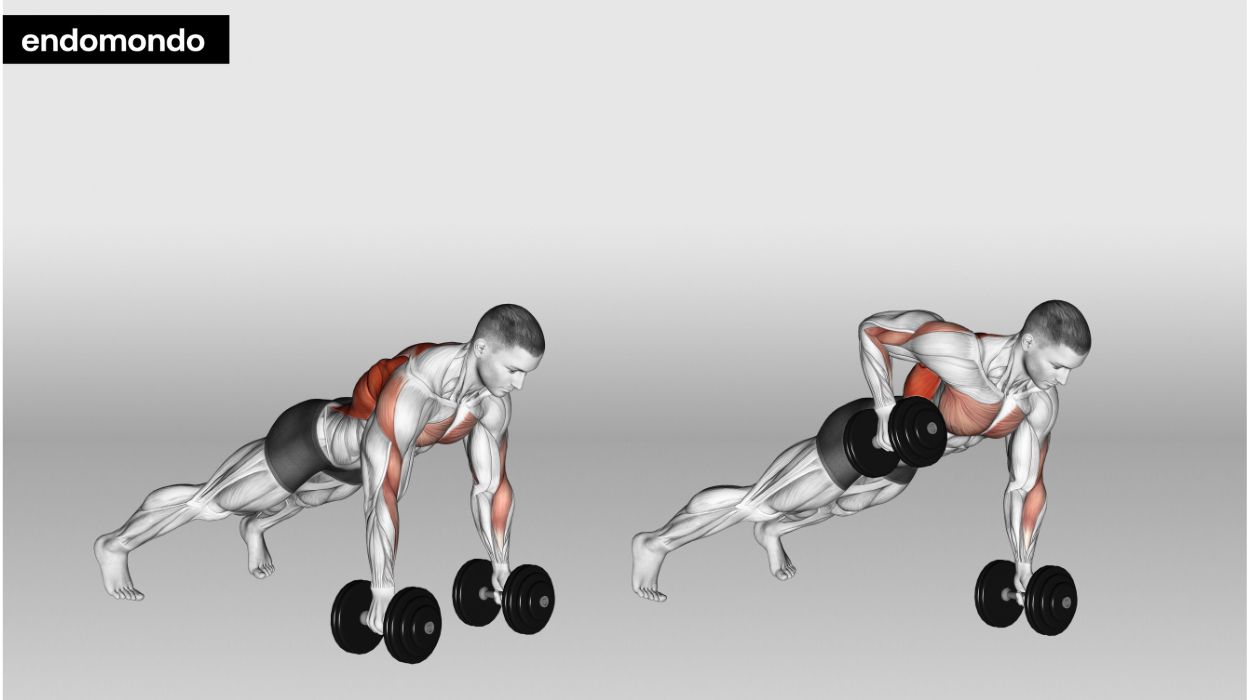
How to do:
- Start in the plank position, holding a dumbbell in each hand.
- Feet set wider than shoulder-width for stability.
- Pull one dumbbell to the rib cage, elbow skimming side.
- Lower the dumbbell slowly; maintain the plank position.
- Repeat with the other arm; alternate while keeping hips stable.
Tips:
- Tighten your abs and glutes throughout the exercise to stabilize your body and protect your lower back.
- Avoid rushing; lift and lower the dumbbells with controlled, deliberate motions to maximize muscle engagement and reduce injury risk.
- Focus on keeping your weight balanced between your hands and feet, avoiding leaning to one side.
Optimal Sets and Reps: Perform 3-4 sets of 6-8 repetitions per arm.
Pull-Ups
Pull-ups are considered one of the quintessential exercises for upper body strength. They target many muscle groups in your upper body including the latissimus dorsi, rhomboids, brachialis, biceps, and even the rectus abdominis.
During a pull-up, your hands should be slightly wider than your shoulders on the bar, your core should be engaged, and your feet crossed to prevent swinging. As you pull your body upwards, focus on driving your elbows towards the floor until your chin is above the bar. Then, slowly lower yourself.
Although pull-ups can be challenging for beginners, their efficacy in strengthening the upper arms and back is unparalleled.
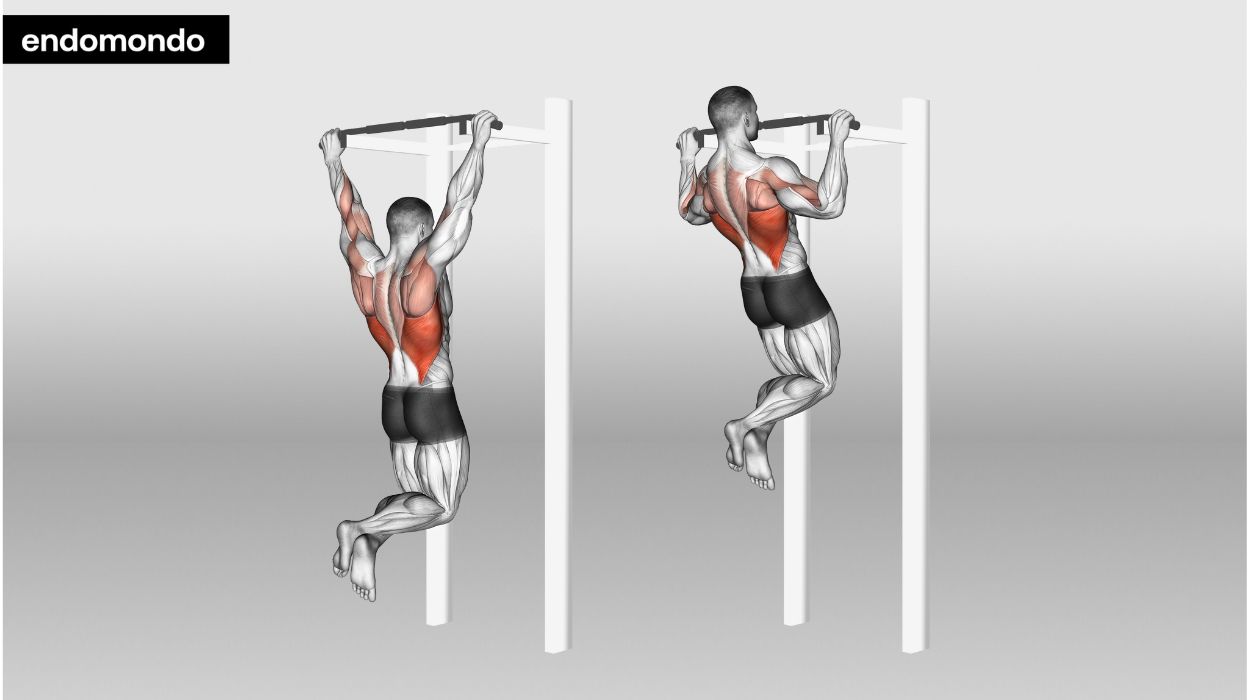
How to do:
- Grip bar with hands slightly wider than shoulder-width apart.
- Hang from the bar with arms fully extended, legs straight.
- Pull up until your chin clears the bar.
- Pause at the top, squeezing shoulder blades together.
- Lower back down slowly to full arm extension.
Tips:
- Tighten your abdominal muscles during the exercise to stabilize your body and enhance control.
- Focus on performing pull-ups with minimal momentum to maximize muscle engagement and reduce the risk of injury.
- Inhale on the way down and exhale as you pull yourself up, to maintain a steady rhythm and proper form.
Optimal Sets and Reps: Aim for 3-5 sets of 5-8 repetitions each.
Face Pulls
Face pulls are an excellent exercise to target the posterior deltoids, mid-trapezius, and rhomboids. They also help strengthen the rotator cuff muscles, which are crucial for shoulder stability.
Attach a rope to a high pulley on a cable machine to perform a face pull. Standing a few steps back, pull the rope towards your forehead, splitting your hands apart at the end of the motion.
Squeeze your shoulder blades together and hold for a second before returning to the start position. Regularly incorporating face pulls into your workout regimen can help improve posture, shoulder health, and upper body strength.
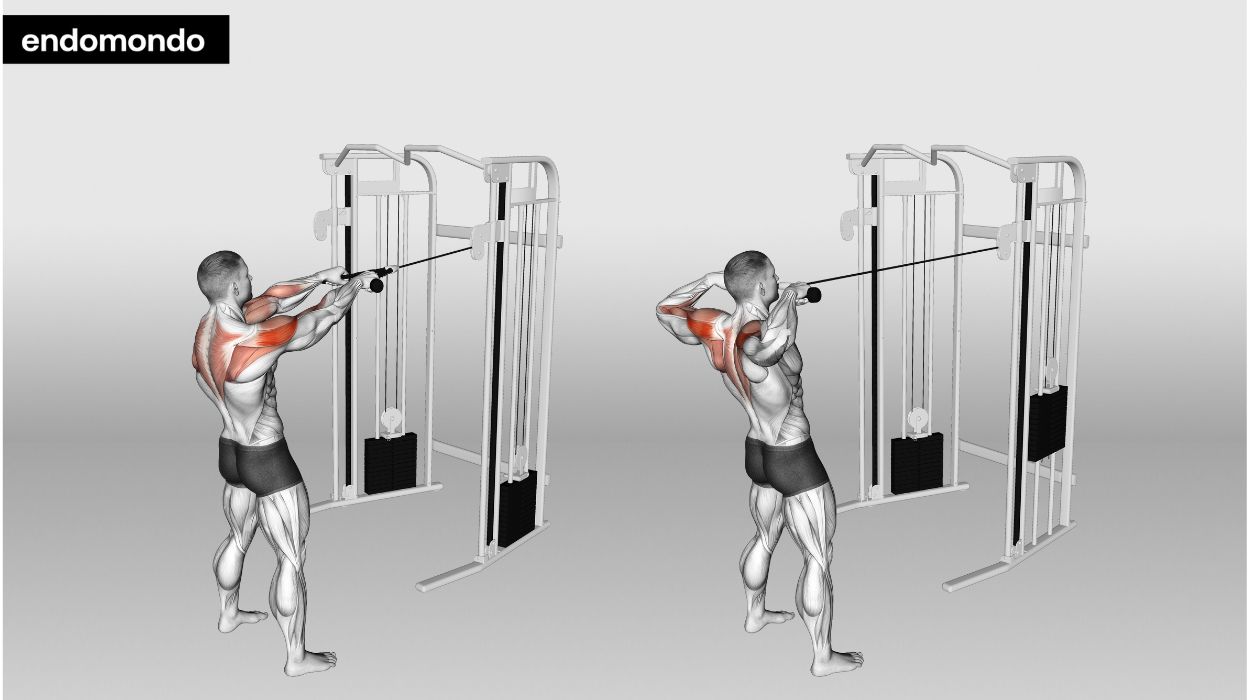
How to do:
- Attach a rope to a high pulley of a cable machine.
- Grip each end of the rope with palms facing in.
- Step back, arms extended, maintaining tension on the cable.
- Pull the rope towards the face, elbows high and out.
- Slowly return to the starting position, controlling the resistance.
Tips:
- Squeeze your shoulder blades together at the end of the pull to fully engage the upper back muscles.
- Keep your spine neutral and avoid leaning back or using momentum, ensuring the movement is driven by your upper back.
- Perform both the pulling and releasing phases slowly and with control to maximize muscle engagement and reduce injury risk.
Optimal Sets and Reps: Aim for 3-4 sets of 10-12 repetitions each.
Barbell Bent Over Rows
This potent exercise targets your lats, rhomboids, and lower traps. This exercise helps sculpt the upper back, improves posture, and promotes body strength and muscular endurance.
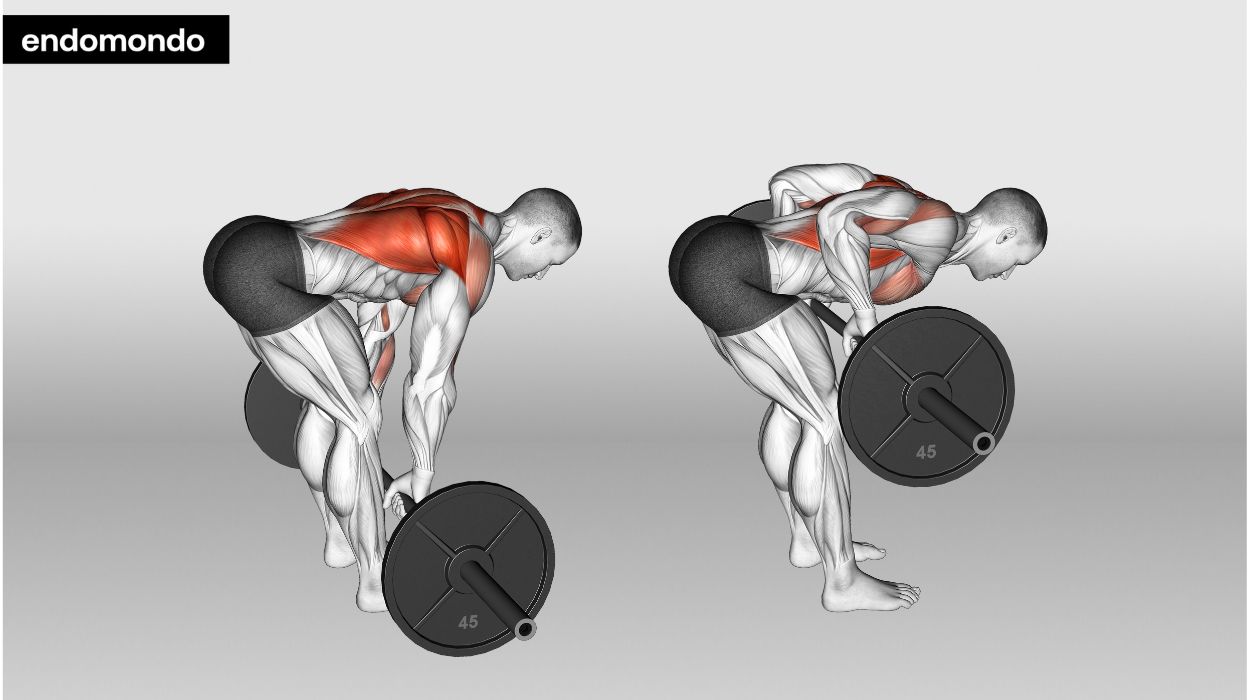
How to do:
- Stand with feet hip-width apart, holding a barbell with an overhand grip.
- Hinge at hips, keep back straight, torso nearly parallel to the floor.
- Pull the barbell up to the chest, and squeeze the shoulder blades at the top.
- Lower the barbell slowly, maintaining control throughout.
Tips:
- This helps maintain a stable base and reduces strain on your lower back during the exercise.
- Pull the barbell by driving your elbows toward the ceiling, ensuring that your back muscles are doing most of the work.
- Maintain a neutral spine throughout the movement to prevent back injuries and ensure effective muscle engagement.
Optimal Sets and Reps: Aim for 3-4 sets of 6-8 repetitions each.
T-Bar Row
T-bar rows are fantastic for comprehensive upper back development, targeting the lats, rhomboids, and traps. They also engage the biceps, deltoids, and core to a lesser degree. T-bar rows are beneficial for improving functional strength and muscular endurance and promoting better body balance and posture.
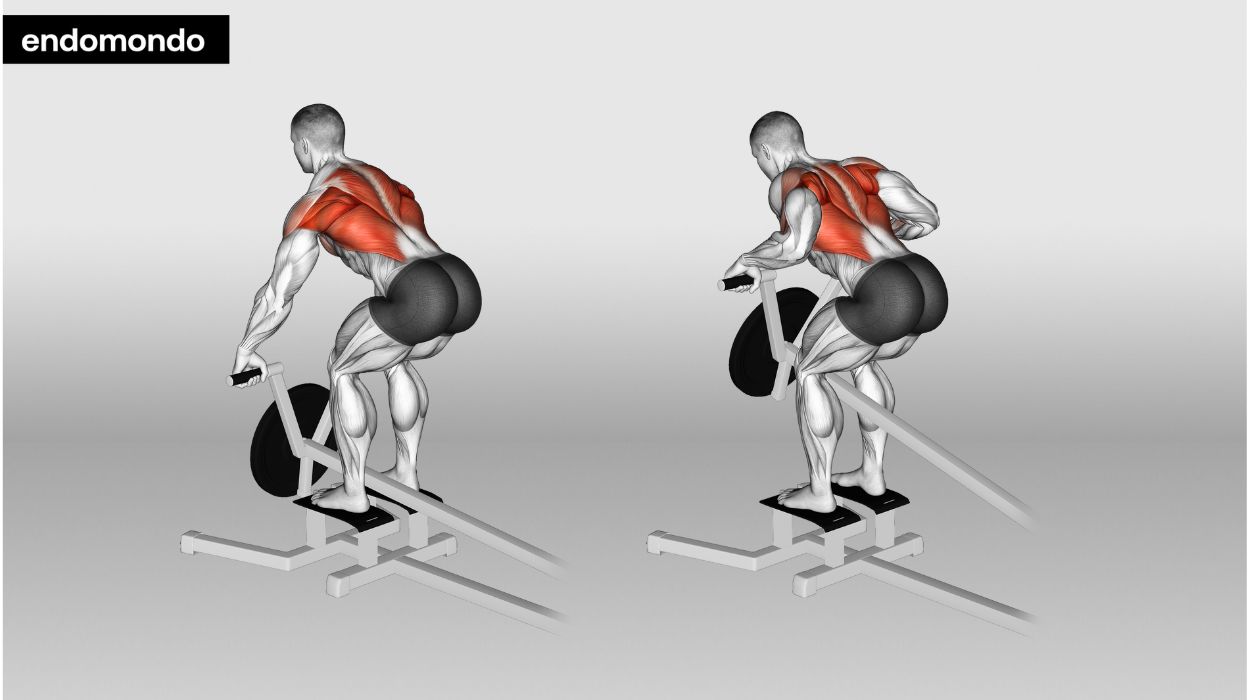
How to do:
- Position yourself on the T-bar machine, feet shoulder-width apart, chest against the pad.
- Grasp the handles and pull them towards your chest, keeping elbows close to your body.
- Slowly lower the weight back down to the starting position.
Tips:
- Keep your abdominal muscles tight throughout the exercise for stability and to protect your lower back.
- Concentrate on using your back to pull the weight, minimizing arm involvement for maximum effectiveness.
- Avoid jerky motions; ensure a smooth, controlled pull and a steady release to enhance muscle engagement and reduce injury risk.
Optimal Sets and Reps: Aim to perform 3-4 sets of 8-12 repetitions each.
Benefits Of Upper Back Training
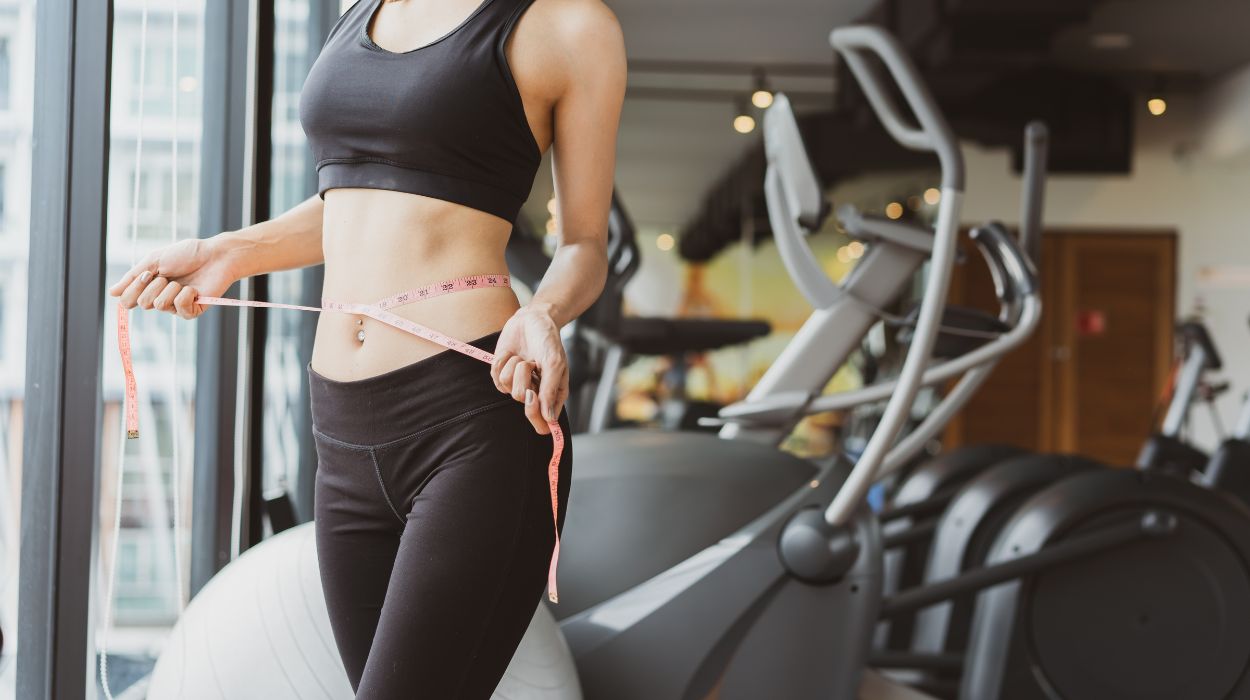
Incorporating upper back exercises into your fitness routine offers many health benefits, and for optimal results, advice from a fitness professional may help ensure these exercises are performed correctly and safely.
Here are six key benefits of upper back exercises:
Enhancing Posture
Posture is an essential aspect of overall health and well-being, often influenced by the strength of our upper back muscles. Regular exercises targeting the upper back, particularly those focusing on the extensors,[1] can result in marked improvements in posture.
A good posture not only contributes to a healthier spine but also promotes a more confident and commanding presence, which, while different, is part of our well-being as well.
Promoting Enhanced Respiratory Functions
The upper back comprises an array of muscles, including the trapezius, rhomboids, and latissimus dorsi, all of which play pivotal roles in our respiratory functions. When these muscles are strengthened through targeted exercises, it can lead to significant improvements in lung capacity and function.
Alleviating Back Pain
Chronic back pain can be a debilitating condition; however, targeted upper back pain exercise can provide relief.[2] By fortifying these muscles, the spine receives better support, reducing unnecessary strain and alleviating discomfort. Implementing a routine of regular exercises for upper back pain can thus serve as a preventive measure as well as a rehabilitative approach for managing chronic back pain.
Boosting Athletic Performance
Exercises targeting the upper back, such as rows and pull-ups, can enhance muscular power and stability. This increased strength and stability enable athletes to perform their respective sports actions more efficiently, thus enhancing their overall performance.
Boosting Functional Capacity
Functional capacity refers to the ability to perform daily activities with ease and efficiency. Studies show that individuals[3] with stronger upper back muscles tend to have a heightened functional capacity. Regular exercises to strengthen the upper back can therefore significantly improve the quality of daily life, making tasks less strenuous and more manageable.
Supporting Weight Loss & Metabolism
Strength training, including upper back exercises, plays a significant yet indirect role in weight loss and metabolism. These exercises lead to the building of lean muscle, which in turn increases the body’s metabolic rate.
This heightened caloric expenditure can significantly aid in weight loss efforts, making upper back exercises a beneficial addition to any fitness or weight loss routine. By combining a balanced diet with a consistent upper back training program, individuals can create a conducive environment for weight loss and improved physical fitness.
Tips For Doing Upper Back Strength Exercises
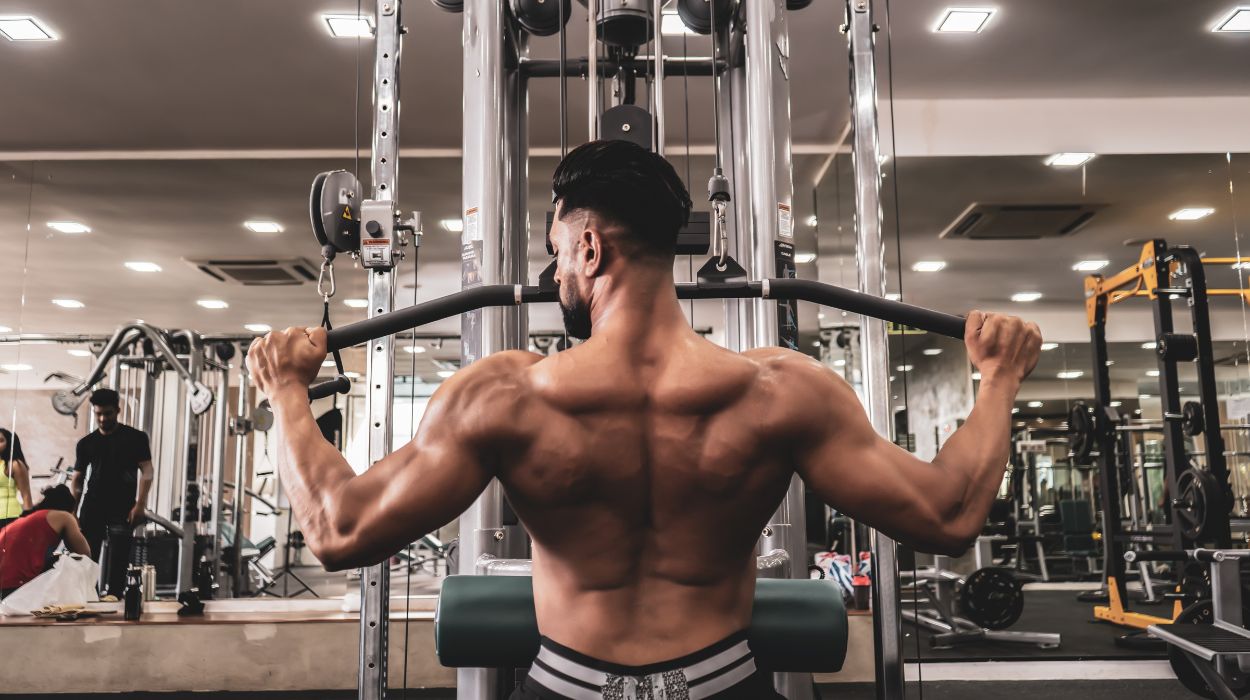
Executing upper back exercises correctly is crucial to avoid injury and maximize results. Here are some useful tips to guide you:
Focus On Form
Quality trumps quantity when it comes to resistance training. It’s crucial to use proper form and controlled movements. Sloppy or rapid-fire reps could lead to strains, sprains, or worse.
Don’t Rush
Allow your muscles to work through the entire range of motion by performing each repetition slowly and deliberately. This technique enhances muscle engagement and promotes better results.
Mind Your Posture
Keep your spine neutral and engage your core to provide a stable base for all movements. A correct posture reduces the risk of back injuries and ensures the targeted muscles are engaged effectively.
Squeeze At The Top
Pause and squeeze your shoulder blades together at the movement’s peak, whether you’re doing rows or pull-ups. This action maximizes muscle activation for better results.
Prioritize Recovery
Strength training causes micro-tears in your muscles, which repair and strengthen during rest periods. Ensure you’re getting adequate rest and recovery between workout sessions.
Stay Hydrated
Proper hydration is essential for muscle function and recovery. Aim to drink plenty of fluids before, during, and after your workouts.
Progress Gradually
If you’re new to upper back exercises, start with lighter weights or easier variations and gradually progress as your strength and endurance improve. This approach prevents overuse injuries and promotes steady, sustainable progress.
Conclusion
With a balanced diet and active lifestyle, upper-back workouts can significantly contribute to your health and fitness goals. While the journey to a stronger back and overall fitness may be challenging, the rewards are worth the effort. Stay consistent, enjoy the process, and reap the benefits of a strong, healthy back.
Frequently Asked Questions
Many upper back exercises can be modified to use body weight or household items. For example, inverted rows can be performed using a sturdy table, and pull-ups can be done on a secured bar or door frame.
Start with what you can do safely and with good form and work up from there.
This varies for each individual. Consistency is key, but most people start noticing improvements in strength and posture within a few weeks of regular upper back training.
Resources
- Fukuda, A., Tsushima, E., Wada, K. and Ishibashi, Y. (2020). Effects of back extensor strengthening exercises on postural alignment, physical function and performance, self-efficacy, and quality of life in Japanese community-dwelling older adults: A controlled clinical trial. Physical therapy research, [online] 23(2), pp.132–142. doi:https://doi.org/10.1298/ptr.e10013.
- Atalay, E., Akova, B., Gür, H. and Sekir, U. (2017). Effect of Upper-Extremity Strengthening Exercises on the Lumbar Strength, Disability and Pain of Patients with Chronic Low Back Pain: A Randomized Controlled Study. Journal of sports science & medicine, [online] 16(4), pp.595–603. Available at: https://www.ncbi.nlm.nih.gov/pmc/articles/PMC5721192/
- Mehrsheed Sinaki (1989). Relationship of Muscle Strength of Back and Upper Extremity with Level of Physical Activity in Healthy Women. American Journal of Physical Medicine & Rehabilitation, [online] 68(3), pp.134–138. doi:https://doi.org/10.1097/00002060-198906000-00007.




